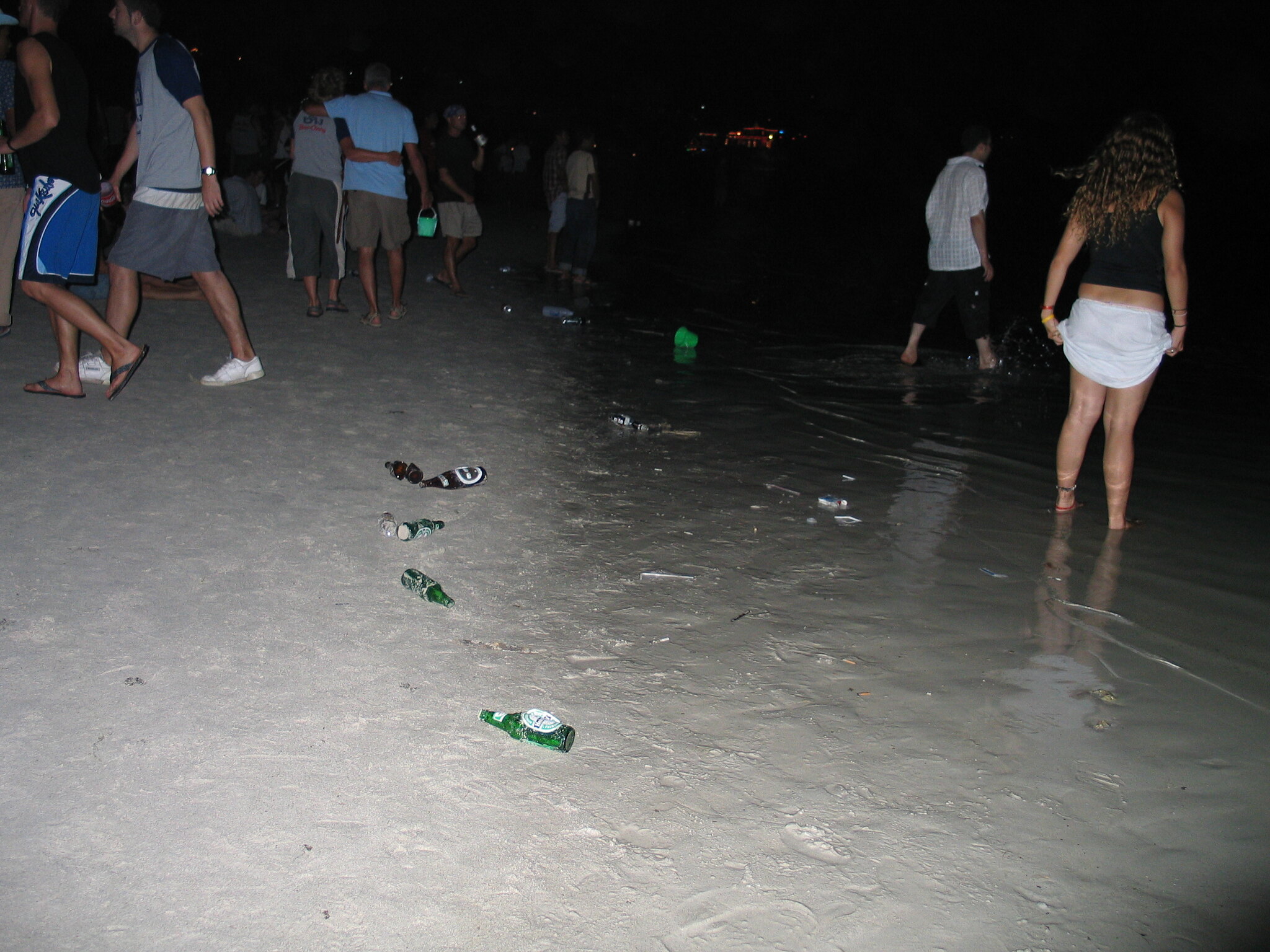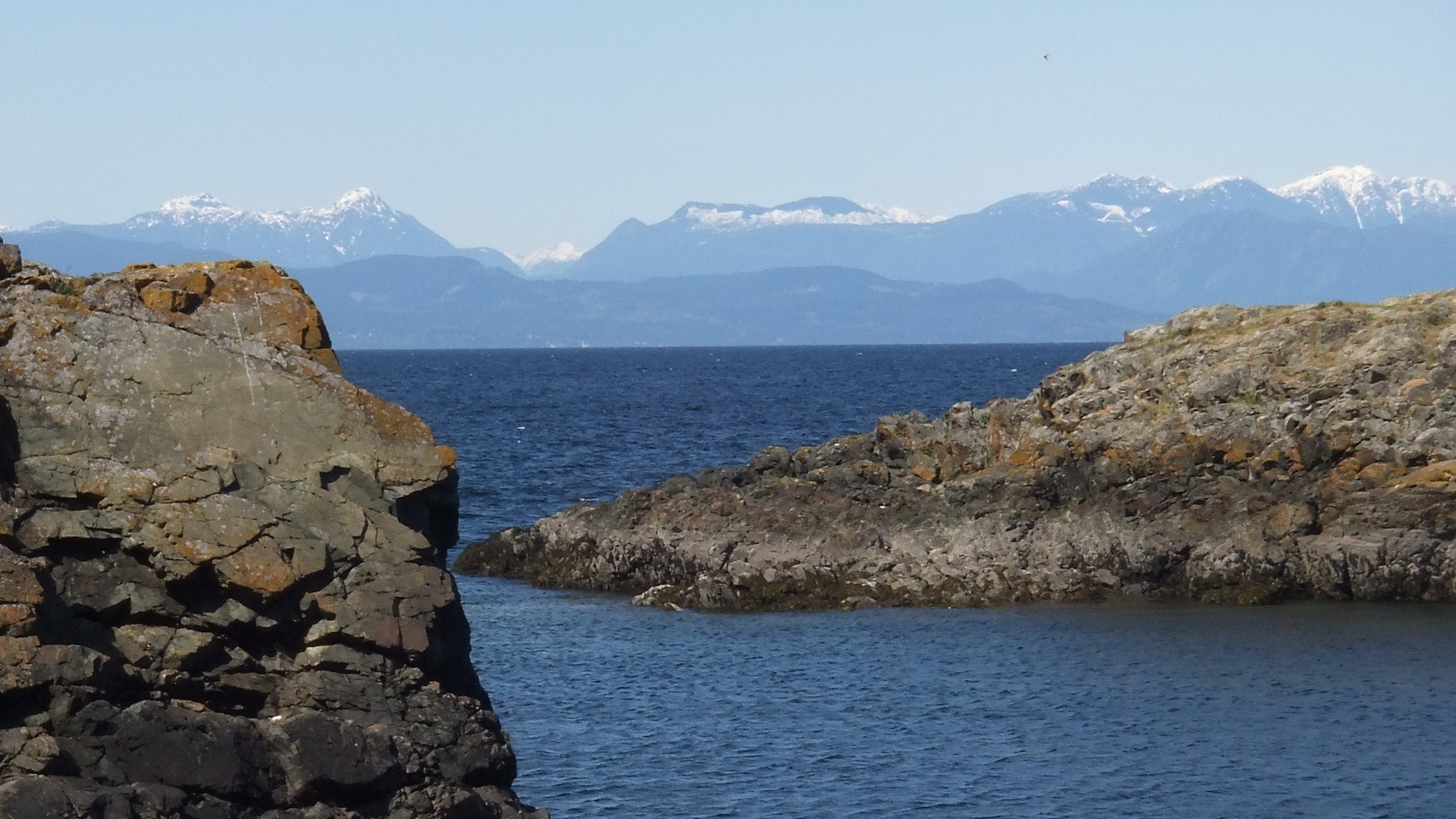10.3: Environmental Stewardship Theory in Tourism
- Page ID
- 9361
\( \newcommand{\vecs}[1]{\overset { \scriptstyle \rightharpoonup} {\mathbf{#1}} } \)
\( \newcommand{\vecd}[1]{\overset{-\!-\!\rightharpoonup}{\vphantom{a}\smash {#1}}} \)
\( \newcommand{\id}{\mathrm{id}}\) \( \newcommand{\Span}{\mathrm{span}}\)
( \newcommand{\kernel}{\mathrm{null}\,}\) \( \newcommand{\range}{\mathrm{range}\,}\)
\( \newcommand{\RealPart}{\mathrm{Re}}\) \( \newcommand{\ImaginaryPart}{\mathrm{Im}}\)
\( \newcommand{\Argument}{\mathrm{Arg}}\) \( \newcommand{\norm}[1]{\| #1 \|}\)
\( \newcommand{\inner}[2]{\langle #1, #2 \rangle}\)
\( \newcommand{\Span}{\mathrm{span}}\)
\( \newcommand{\id}{\mathrm{id}}\)
\( \newcommand{\Span}{\mathrm{span}}\)
\( \newcommand{\kernel}{\mathrm{null}\,}\)
\( \newcommand{\range}{\mathrm{range}\,}\)
\( \newcommand{\RealPart}{\mathrm{Re}}\)
\( \newcommand{\ImaginaryPart}{\mathrm{Im}}\)
\( \newcommand{\Argument}{\mathrm{Arg}}\)
\( \newcommand{\norm}[1]{\| #1 \|}\)
\( \newcommand{\inner}[2]{\langle #1, #2 \rangle}\)
\( \newcommand{\Span}{\mathrm{span}}\) \( \newcommand{\AA}{\unicode[.8,0]{x212B}}\)
\( \newcommand{\vectorA}[1]{\vec{#1}} % arrow\)
\( \newcommand{\vectorAt}[1]{\vec{\text{#1}}} % arrow\)
\( \newcommand{\vectorB}[1]{\overset { \scriptstyle \rightharpoonup} {\mathbf{#1}} } \)
\( \newcommand{\vectorC}[1]{\textbf{#1}} \)
\( \newcommand{\vectorD}[1]{\overrightarrow{#1}} \)
\( \newcommand{\vectorDt}[1]{\overrightarrow{\text{#1}}} \)
\( \newcommand{\vectE}[1]{\overset{-\!-\!\rightharpoonup}{\vphantom{a}\smash{\mathbf {#1}}}} \)
\( \newcommand{\vecs}[1]{\overset { \scriptstyle \rightharpoonup} {\mathbf{#1}} } \)
\( \newcommand{\vecd}[1]{\overset{-\!-\!\rightharpoonup}{\vphantom{a}\smash {#1}}} \)
\(\newcommand{\avec}{\mathbf a}\) \(\newcommand{\bvec}{\mathbf b}\) \(\newcommand{\cvec}{\mathbf c}\) \(\newcommand{\dvec}{\mathbf d}\) \(\newcommand{\dtil}{\widetilde{\mathbf d}}\) \(\newcommand{\evec}{\mathbf e}\) \(\newcommand{\fvec}{\mathbf f}\) \(\newcommand{\nvec}{\mathbf n}\) \(\newcommand{\pvec}{\mathbf p}\) \(\newcommand{\qvec}{\mathbf q}\) \(\newcommand{\svec}{\mathbf s}\) \(\newcommand{\tvec}{\mathbf t}\) \(\newcommand{\uvec}{\mathbf u}\) \(\newcommand{\vvec}{\mathbf v}\) \(\newcommand{\wvec}{\mathbf w}\) \(\newcommand{\xvec}{\mathbf x}\) \(\newcommand{\yvec}{\mathbf y}\) \(\newcommand{\zvec}{\mathbf z}\) \(\newcommand{\rvec}{\mathbf r}\) \(\newcommand{\mvec}{\mathbf m}\) \(\newcommand{\zerovec}{\mathbf 0}\) \(\newcommand{\onevec}{\mathbf 1}\) \(\newcommand{\real}{\mathbb R}\) \(\newcommand{\twovec}[2]{\left[\begin{array}{r}#1 \\ #2 \end{array}\right]}\) \(\newcommand{\ctwovec}[2]{\left[\begin{array}{c}#1 \\ #2 \end{array}\right]}\) \(\newcommand{\threevec}[3]{\left[\begin{array}{r}#1 \\ #2 \\ #3 \end{array}\right]}\) \(\newcommand{\cthreevec}[3]{\left[\begin{array}{c}#1 \\ #2 \\ #3 \end{array}\right]}\) \(\newcommand{\fourvec}[4]{\left[\begin{array}{r}#1 \\ #2 \\ #3 \\ #4 \end{array}\right]}\) \(\newcommand{\cfourvec}[4]{\left[\begin{array}{c}#1 \\ #2 \\ #3 \\ #4 \end{array}\right]}\) \(\newcommand{\fivevec}[5]{\left[\begin{array}{r}#1 \\ #2 \\ #3 \\ #4 \\ #5 \\ \end{array}\right]}\) \(\newcommand{\cfivevec}[5]{\left[\begin{array}{c}#1 \\ #2 \\ #3 \\ #4 \\ #5 \\ \end{array}\right]}\) \(\newcommand{\mattwo}[4]{\left[\begin{array}{rr}#1 \amp #2 \\ #3 \amp #4 \\ \end{array}\right]}\) \(\newcommand{\laspan}[1]{\text{Span}\{#1\}}\) \(\newcommand{\bcal}{\cal B}\) \(\newcommand{\ccal}{\cal C}\) \(\newcommand{\scal}{\cal S}\) \(\newcommand{\wcal}{\cal W}\) \(\newcommand{\ecal}{\cal E}\) \(\newcommand{\coords}[2]{\left\{#1\right\}_{#2}}\) \(\newcommand{\gray}[1]{\color{gray}{#1}}\) \(\newcommand{\lgray}[1]{\color{lightgray}{#1}}\) \(\newcommand{\rank}{\operatorname{rank}}\) \(\newcommand{\row}{\text{Row}}\) \(\newcommand{\col}{\text{Col}}\) \(\renewcommand{\row}{\text{Row}}\) \(\newcommand{\nul}{\text{Nul}}\) \(\newcommand{\var}{\text{Var}}\) \(\newcommand{\corr}{\text{corr}}\) \(\newcommand{\len}[1]{\left|#1\right|}\) \(\newcommand{\bbar}{\overline{\bvec}}\) \(\newcommand{\bhat}{\widehat{\bvec}}\) \(\newcommand{\bperp}{\bvec^\perp}\) \(\newcommand{\xhat}{\widehat{\xvec}}\) \(\newcommand{\vhat}{\widehat{\vvec}}\) \(\newcommand{\uhat}{\widehat{\uvec}}\) \(\newcommand{\what}{\widehat{\wvec}}\) \(\newcommand{\Sighat}{\widehat{\Sigma}}\) \(\newcommand{\lt}{<}\) \(\newcommand{\gt}{>}\) \(\newcommand{\amp}{&}\) \(\definecolor{fillinmathshade}{gray}{0.9}\)Some basic concepts of environmental management and ethics, especially as they apply to tourism, include carrying capacity, footprint, tragedy of the commons, and the tourism paradox. This section also outlines some of the key approaches to dealing with environmental and sustainability issues in the tourism industry including sustainable tourism, ecotourism, and responsible tourism management.
Carrying Capacity
Carrying capacity is “the average maximum number of individuals of a given species that can occupy a particular habitat without permanently impairing the productive capacity of that habitat” (Rees, 2001, p. 229).

This concept has been applied to tourism in the context of a tourism carrying capacity (TCC), “the maximum number of visitors which an area can sustain without unacceptable deterioration of the physical environment and without considerably diminishing user satisfaction” (Salerno, Viviano, Manfredi, Caroli, Thankuri, & Tartari, 2013, p. 116).
Take a Closer Look: Vehicle Congestion in Banff National Park
In late 2014, the Town of Banff approved $70,000 to study the feasibility of introducing a gondola network to connect the Banff Centre, the Banff Springs Hotel, the Upper Hot Springs, and the existing mountain gondola. That summer the town experienced 54 days of congestion that exceeded its threshold of 20,000 vehicles per day, with vehicle waits and idle times of up to 1.5 hours during peak periods. To learn more about the issue and proposed solutions, read “Banff Considers Potential of Gondola Network.”
Carrying capacity factors are determined within a scientific framework and must adapt to various changes and needs of local people and ecosystems. There are many examples of TCC being applied in tourism globally and it is important to note that no two areas have the same set of factors to determine carrying capacity. In Canada, national parks use the concept to ensure visitor numbers are restricted to a sustainable level along with other wilderness areas, protected areas, Indigenous Territories and waterways, campgrounds, and front country experiences.
Although TCC is a theoretical concept that is often discussed and utilized for analysis, in reality it can be challenging to restrict the numbers of tourists arriving at a destination. Both determining and managing the carrying capacity of a destination requires input from local peoples and environmental data. One successful approach is to limit access to an area or to simply limit tourist numbers.
Ecological Footprint
Ecological footprint is essentially a tool to analyze the impact of a population on Earth (Rees, 2001). The model calculates the total area of land and water resources used to support the population, presenting it in a manner that can be easily related to — usually in terms of the amount of land needed to support an individual at the standard of living that person is used to.
Many countries and people of those countries use more natural resources within and beyond their own borders than ecosystems can regenerate (biocapacity). Because of this, these countries and people are essentially running an “ecological deficit.” Nations and people can run these ecological deficits by overusing their own (and other Nations’/peoples’) resources, such as by overfishing, taking resources from other areas, and/or emitting higher levels pf carbon dioxide into the atmosphere than can be absorbed (Global Footprint Network, 2020).
Tragedy of the Commons
Tragedy of the commons is an economic theory first proposed by Garrett Hardin in 1968, which states that if individuals are given the chance to overuse a common property, they will, in order to realize the maximum personal benefits. If every person does this, common property quickly becomes overused and damaged (Hardin, 1968).
For example, a group of tourism operators may look at a pristine natural area and see a chance for economic profit, and in the race for development, little or nothing is done to protect the area. If this unchecked development were to continue, the damage to the environment could reach a point where the elements that attracted tourists in the first place are irreversibly damaged, thus resulting in the “tragedy” that Hardin discusses (Hardin, 1968).
The tragedy of the commons leads to something known as the tourism paradox, a concept that describes the paradoxical nature of tourism’s relationship with the environment.
The Tourism Paradox

A common theme promoted by many tourism destinations is their location in some of the most ecologically fragile environments in existence — coastal, mountain, and river environments (Williams & Ponsford, 2008). Tourism requires these areas to be intact to serve as an attraction to visitors. Tourists expect a clean physical environment, appropriate seasonal conditions, and diversity of wildlife. Destinations failing to provide at least some of these elements risk losing their competitive edge in the global market; visitors will steer clear of polluted, barren landscapes with unpredictable or uncomfortable weather.
Spotlight On: The Resort Municipality of Whistler
The community of Whistler relies heavily on natural resources for its local tourism products, such as skiing, and has long been active in sustainability initiatives. The plan, Whistler 2020, sets out integrated community strategies for enhancing community life, enhancing the resort experience, ensuring economic viability, protecting the environment, and partnering for success. For more information about the plan and Whistler’s progress with these initiatives, visit the Whistler2020 website.
At the same time, the tourism industry is itself causing environmental damage through its own development in pristine areas, consumption of resources, and contribution to climate change. This is the paradox: as an industry, tourism both creates damage and suffers from it. That’s why it’s critical for the industry to be proactive about environmental sustainability in tourism; failing to do so may result in our downfall (Williams & Ponsford, 2008).
Before we gain a better understanding of the ways the tourism industry and individual operators can try to mitigate their impacts, let’s take a closer look at the overall management of BC’s environmental resources.
Sustainable Tourism
The UNWTO sees sustainable tourism as a set of guidelines and management practices that can be applied to all forms of tourism (from small-scale to mass tourism) and in all destination types (2005). When referring to sustainable tourism, sustainability principles relating to environmental, economic and socio-cultural aspects of tourism development must be addressed. As such, sustainable tourism development requires the informed consent and input from local people and stakeholders and must address the need to:
- Make optimal use of environmental resources that constitute a key element in tourism development, maintaining essential ecological processes and helping to conserve natural heritage and biodiversity.
- Respect the socio-cultural authenticity of host communities, conserve their built and living cultural heritage and traditional values, and contribute to inter-cultural understanding and tolerance.
- Ensure viable, long-term economic operations, providing socio-economic benefits to all stakeholders that are fairly distributed, including stable employment and income-earning opportunities and social services to host communities, and contributing to poverty alleviation (UNWTO, 2005, p. 11–12).
Many industry leaders feel that the sustainable tourism movement is fragmented and lacks leadership and accountability due to the fragmentation of the tourism industry itself (Mullis, 2017). Tourists themselves have a large role to play in this equation in that their experiences are generally more positive when experiences incorporate sustainability principles and it has been found that tourists are more likely to visit or make purchases from tourism companies that have sustainability practices in place (Mandala Research, 2015).
Responsible Tourism
Responsible Tourism is an approach to tourism development that was defined through the Cape Town Declaration in 2002 in an effort to provide practical, evidence-based solutions that sustainable tourism approaches have not succeeded to do. Responsible tourism is defined as “making better places for people to live in and better places for people to visit” (Cape Town Declaration, 2002). Responsible tourism approaches focus on identifying important issues to local people and their environments, addressing those issues and transparently reporting and monitoring on those issues.
The Cape Town Declaration recognizes that Tourism can provide numerous benefits to people and destinations however tourist and industry behaviour must be managed in a way that is defined by local people who know what they need best.
The Responsible Tourism approach is defined by tourism that:
- minimizes negative economic, environmental and social impacts;
- generates greater economic benefits for local people and enhances the well-being of host communities, improves working conditions and access to the industry;
- involves local people in decisions that affect their lives and life changes;
- makes positive contributions to the conservation of natural and cultural heritage, to the maintenance of the world’s diversity;
- provides more enjoyable experiences for tourists through more meaningful connections with local people, and a greater understanding of local cultural, social and environmental issues;
- provides access for people with disabilities and the disadvantaged;
- is culturally sensitive, engenders respect between tourists and hosts, and builds local pride and confidence (Harold Goodwin, 2014).


